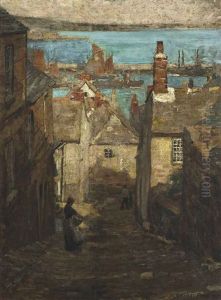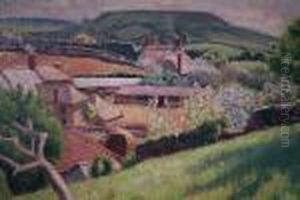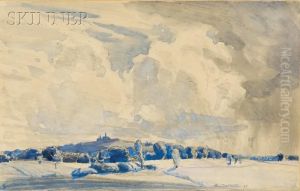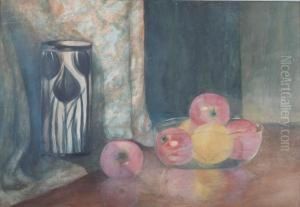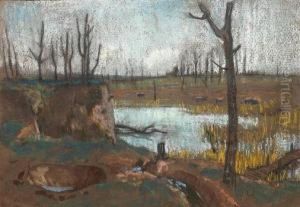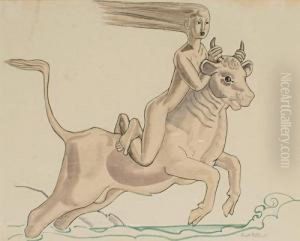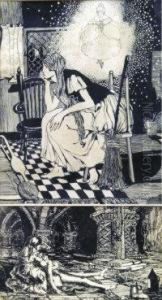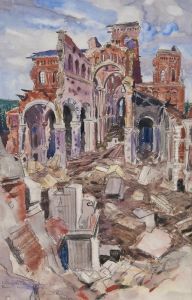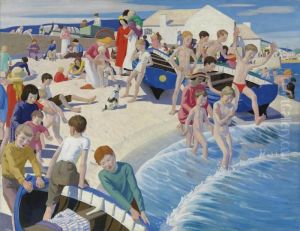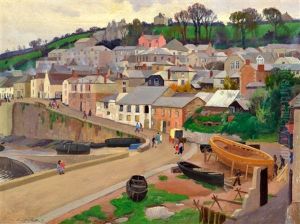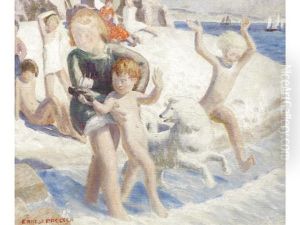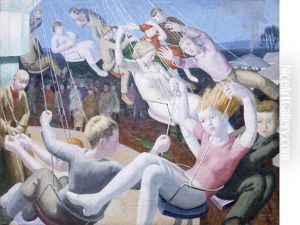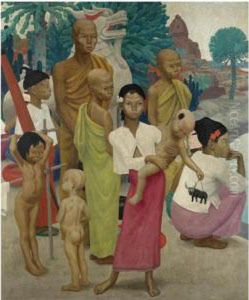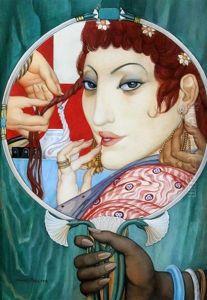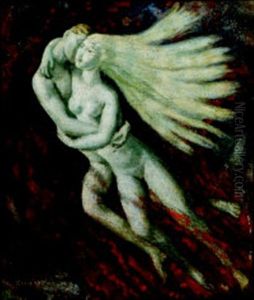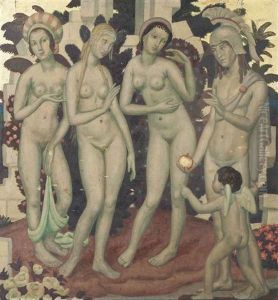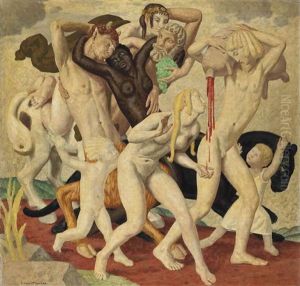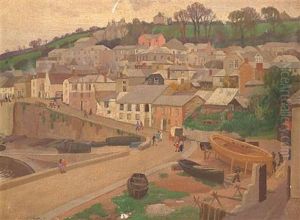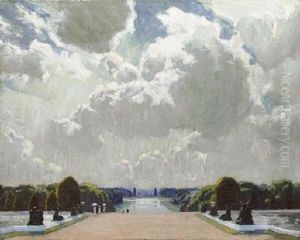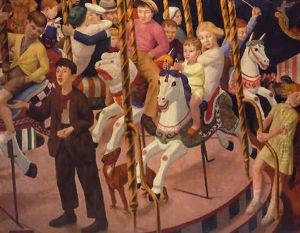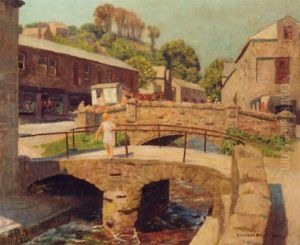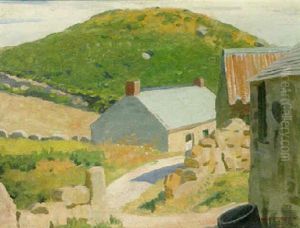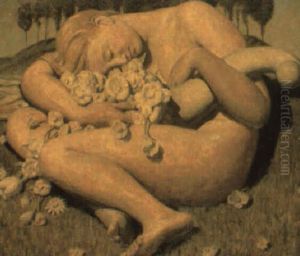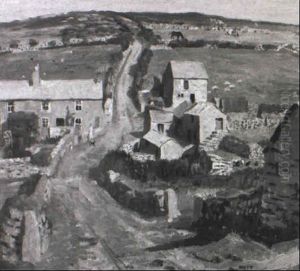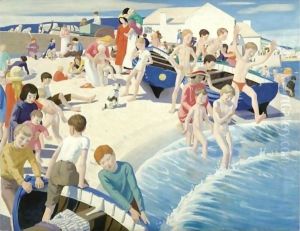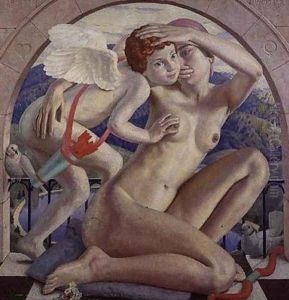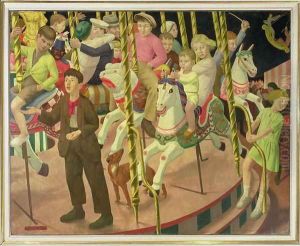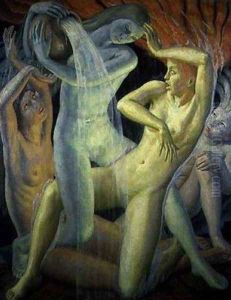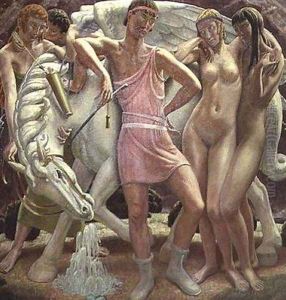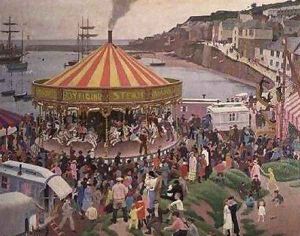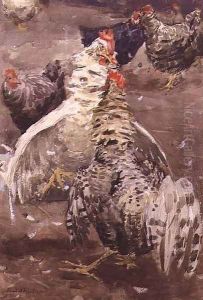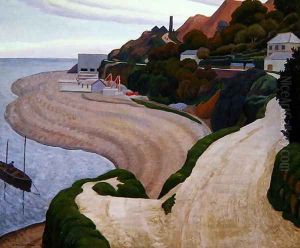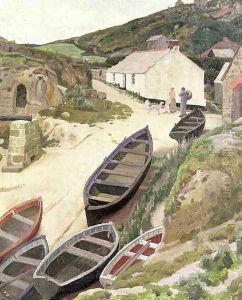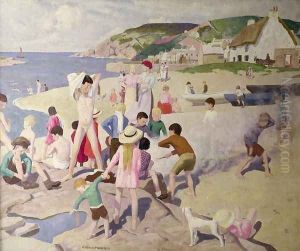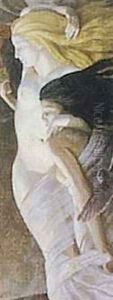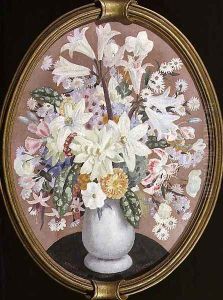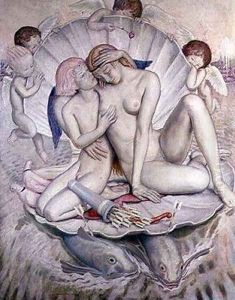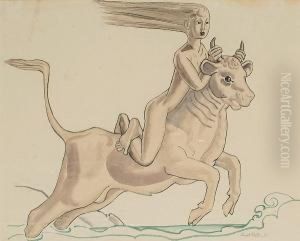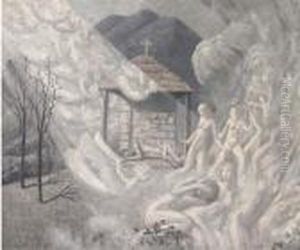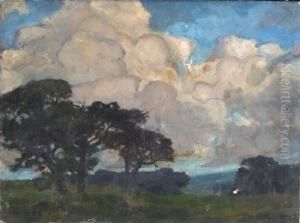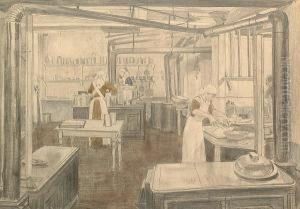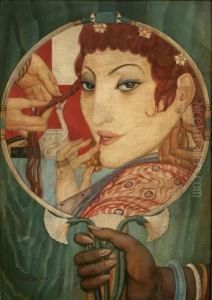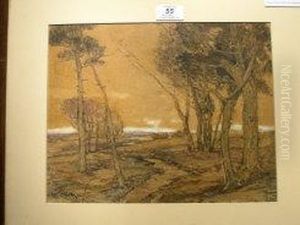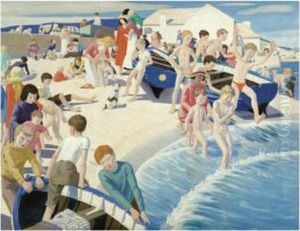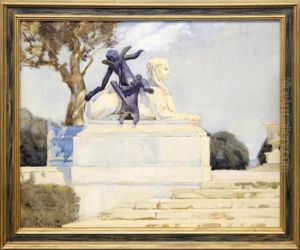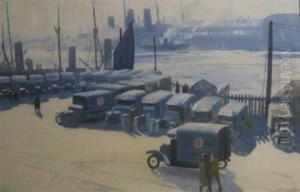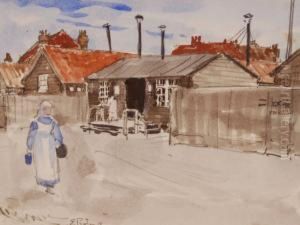Ernest Procter Paintings
Ernest Procter was a British artist known for his versatile approach to art, which included painting, design, and illustration. Born on October 26, 1886, in Newcastle upon Tyne, Procter displayed artistic talent from a young age. He studied at the Forth Street School of Art in Newcastle before moving to the Royal College of Art in London. There, he met his future wife, Dod Procter, who was also a talented artist. The couple would often collaborate on various projects throughout their careers.
Procter's work was influenced by the Newlyn School of artists, which was known for its naturalistic and plein-air painting style. He moved to Newlyn, Cornwall, where he became an integral part of the artistic community and developed a strong affinity for the Cornish landscape and its people. His works often depicted scenes of everyday life in Cornwall, and he was particularly adept at capturing the effects of light on the natural environment.
During World War I, Procter served in the Artists' Rifles regiment, and his experiences during the war had a profound impact on his artistic direction. In the post-war years, Procter's style evolved, and he began to incorporate more modernist elements into his work, reflecting the broader changes in the European art scene.
Apart from painting, Procter was also involved in other forms of artistic expression. He worked on designs for the Dovecot Tapestry Studio, and his work in the decorative arts extended to stained glass and illustration for books. He was a respected teacher, sharing his knowledge and passion for art with students at the Glasgow School of Art and the Royal College of Art.
Ernest Procter's career was cut short when he died unexpectedly at the age of 49 on June 6, 1935. Despite his relatively brief career, Procter left behind a rich legacy of work that continues to be appreciated for its contribution to British art. His paintings are held in collections across the UK, including the Tate Gallery and the National Portrait Gallery.
